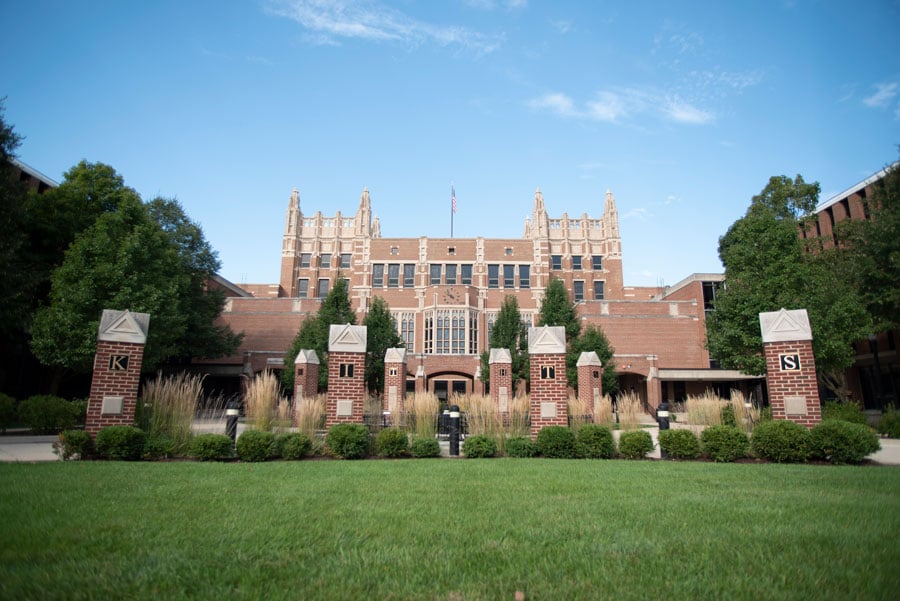ETHS to remain virtual through all of first semester, citing high COVID-19 positivity rates in region
Daily file photo by Colin Boyle
Evanston Township High School. After a year of virtual learning, the district will return to in-person instruction in April.
October 13, 2020
After over a month of virtual learning, Evanston Township High School/District 202 will remain all virtual through at least the end of the semester, district officials said in a Monday meeting.
The district has based its decision on returning to in-person instruction, in part, on statistics and guidelines from the state. It is located within Region 10, as designated by the Illinois Department of Public Health. Conversely, Evanston/Skokie School District 65 is currently slated to begin a phased return to in-person classes on Nov. 16.
Superintendent Eric Witherspoon said the region’s seven-day average positivity rate is hovering above 5 percent. The statistic is significantly higher than the 3 percent marker the district has previously said would allow for the consideration of some in-person instruction.
Witherspoon said despite relatively low levels of COVID-19 positivity in Evanston, the district can’t exclusively consider the state of the city as a marker for the impact of reopening.
“The problem is we don’t live in isolation,” Witherspoon said. “The minute we would try to bring back people, remember, we have 600 employees, and they live not only all over Region 10, they even live in Indiana and Wisconsin, and some other areas.”
ETHS Assistant Superintendent/Principal Marcus Campbell said multiple schools across the state have reopened in the past few weeks, but have subsequently closed because of COVID-19 outbreaks.
He said schools using the hybrid model may be able to limit the spread of the virus to an extent, but any return to in-person learning will put students at risk and create difficulties for teachers.
“The hybrid model is more instructionally disruptive,” Campbell said. “There’s definitely significant challenges to remote learning, but it is the best option for the continuity of instruction.”
Campbell said the district is continuing its outreach to students to attempt to make e-learning as accessible as possible. The district has implemented multiple programs, including weekly free lunch pickups and the distribution of Chromebooks, to try and support families in some of the same ways it does during normal school years.
Despite previous experience in the spring and additional time to prepare for remote learning over the summer, Pete Bavis, the assistant superintendent for curriculum and instruction, said teachers are still facing significant challenges.
Bavis said many teachers are completely relearning how to run their classes, but they have been sharing potential solutions with each other. Additionally, if the proposed hybrid model goes into effect later in the year, students will attend school in person approximately four times a month, and teachers will have to adapt their teaching strategies again.
“Educators have been asked to transform the educational environment, and that holds true today,” Bavis said. “As much as it did in the summer, and as much as it did in the spring, school does not look or feel the same.”
Email: [email protected]
Twitter: @jacobnfulton
Related stories:
— D202 board approves 2021 budget amid pandemic concerns
— District 202 leaders address remote reopening concerns at town hall


